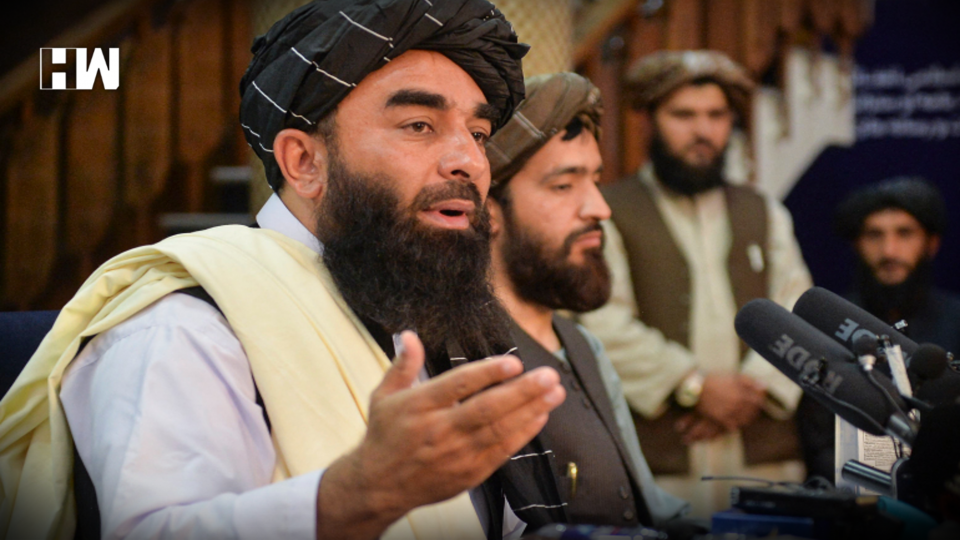The Taliban’s senior leadership includes many Mujahideen fighters who were once trained by the U.S. during the Cold War to battle against the invading Soviet Union forces in the 1980s.
The Taliban’s leadership structure has mostly been in the shadows for years. Even before the U.S. invasion in 2001, besides the names of a few top leaders, very little was known about how the group operates.
Now this group is trying to recast themselves in a more moderate mold by promising amnesty for their enemies, vowing to build an inclusive government with various ethnic groups, keep terrorist groups off Afghan soil and allowing women to work within the bounds of Shariah law. Those are all among conditions for the U.S. and its allies to recognize the group as the legitimate new rulers of Afghanistan.
The Taliban’s senior leadership includes many Mujahideen fighters who were once trained by the U.S. during the Cold War to battle against the invading Soviet Union forces in the 1980s.
Here are seven of the most influential men in the organization:
1. Haibatullah Akhundzada, Supreme Commander
Born in 1961, Haibatullah Akhunzada became the Taliban’s third supreme commander which is the highest rank in the organization after the U.S. killed his predecessor in a 2016 drone strike. He is more known as a religious leader than a military commander, and maintains a low profile.
2.Abdul Ghani Baradar, Deputy Leader
The Taliban’s deputy leader is the main public face of the Taliban who will likely head the next government. He was closely associated with Osama bin Laden and co-founded the Taliban along with Mullah Mohammad Omar, the one-eyed cleric who was the group’s first supreme leader..
Baradar lived in Doha, Qatar, where the Taliban has a political office, until his return on Tuesday to the southern city of Kandahar, the group’s birthplace. As the Taliban’s diplomatic leader, he signed a peace deal with the Trump administration in February 2020 that laid out the roadmap for the withdrawal of U.S. and NATO forces from Afghanistan. He also met Chinese Foreign Minister Wang Yi earlier this month in Tianjin.
3.Sirajuddin Haqqani, Leader of Designated Terrorist Group
The leader of the Haqqani Network, a U.S.-designated terrorist organization, became the second deputy Taliban leader after the groups merged around 2016. He is believed to move between Afghanistan and Pakistan, and is said to oversee finances and military assets across the two countries. It’s unclear how the U.S. will treat the Haqqani Network as part of ongoing negotiations with the Taliban. His brother, also a key Taliban leader, was captured by U.S. forces in Bahrain in 2014 and transferred to Bagram prison before being released in a prisoner exchange four years later.
Also read: Afghanistan Crisis: Who Are Taliban and Why Do They Want To Rule Afghanistan?
4.Mohammad Yaqoob, Founder’s Son
Yaqoob is the son of Taliban founder Mullah Omar, and was once considered a contender for the group’s top job because of his lineage. Few details are known about him. News reports suggest that he was educated in a seminary in neighboring Pakistan and now lives in Afghanistan. He is believed to supervise the group’s military activities along with Sirajuddin Haqqani.
5.Abdul Hakim Haqqani, Top Negotiator
Believed to be close to Supreme Commander Akhunzada, Haqqani heads the Taliban’s negotiating team in charge of the peace talks with the former U.S.-backed government. He also heads a senior council of religious scholars.
6.Sher Mohammad Abbas Stanikzai, Key Diplomat
Unlike many of the group’s leaders, Stanikzai speaks fluent English and traveled the world extensively as deputy foreign minister when the militants last controlled power in Afghanistan. In 1996, he visited Washington on a failed mission to convince the Clinton administration to acknowledge the Taliban’s government. He has also led delegations to China to meet government officials, according to a Reuters report.
7.Zabihullah Mujahed, Main Spokesman
Mujahed earlier this week addressed the Taliban’s first press conference in Kabul, and is likely to play a significant role in conveying the group’s message to the international community. During 20 years of war, he communicated with journalists only over the phone or via text messages. The media interaction on Aug. 17 was the first time he was seen in public.
(Inputs from NDTV)
As an independent media platform, we do not take advertisements from governments and corporate houses. It is you, our readers, who have supported us on our journey to do honest and unbiased journalism. Please contribute, so that we can continue to do the same in future.

